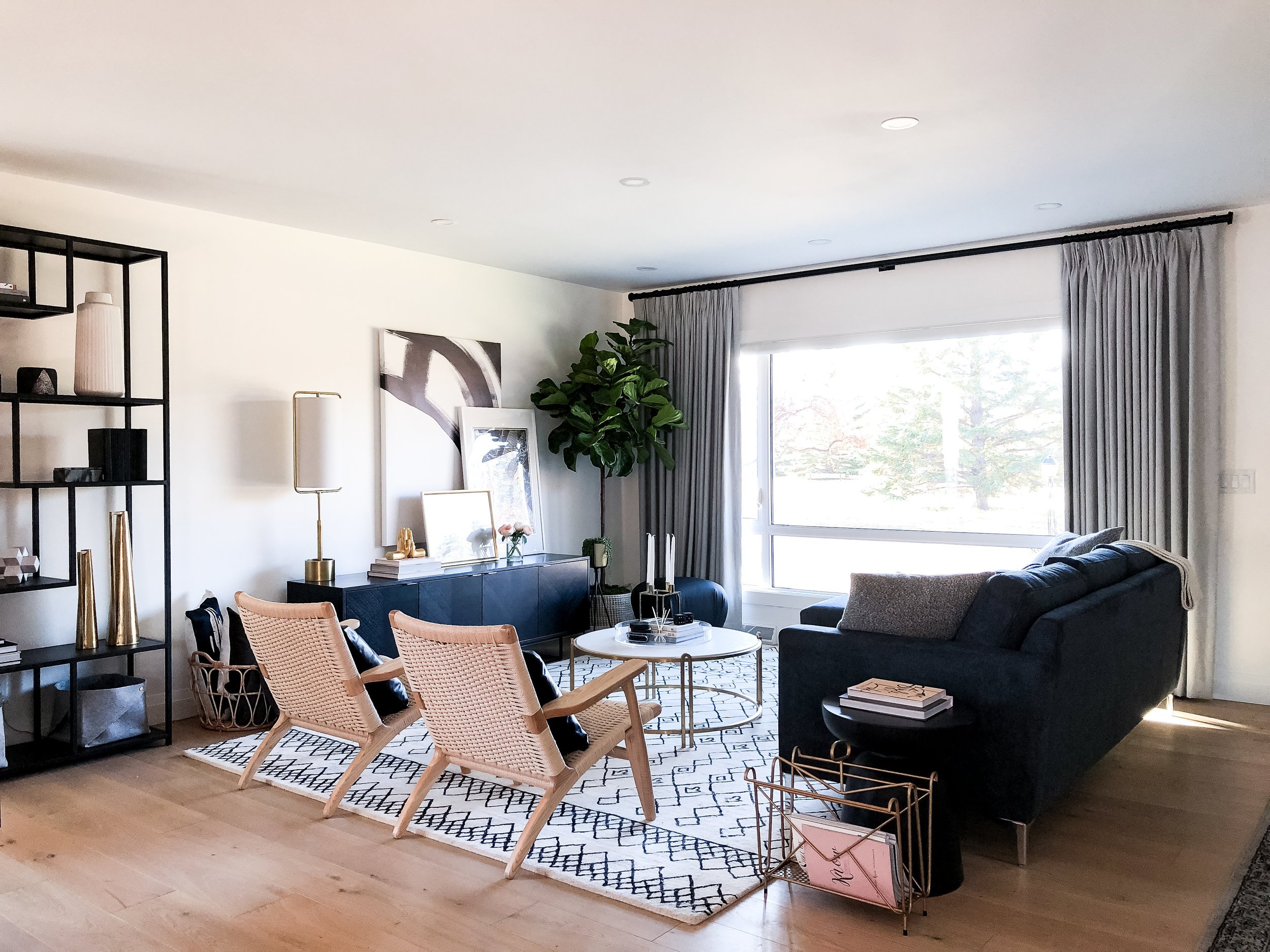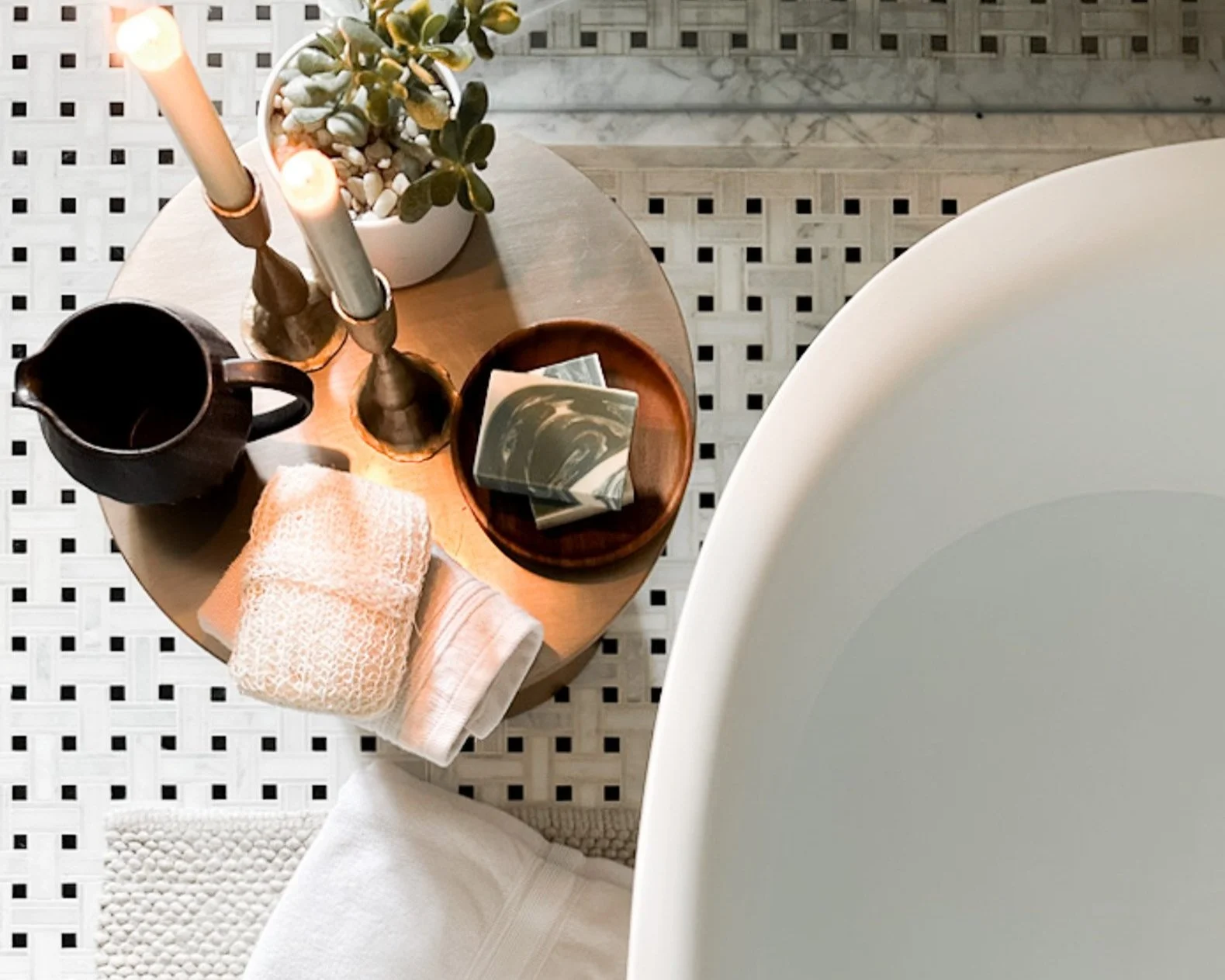Trade, Custom or Retail Furniture? We're Here To Help!
The furniture stage of a project is one of the many aspects of interior design that brings your home to life, and creates a space/ home you’ll feel good in. A house simply isn’t a home, without this next level of design and detail.
Selecting furniture is overwhelming. There are options galore, and items that look very similar one to the next. Which one is best? Why is there such a cost difference? How do I know this is the right piece for me?
One of the many benefits of working with an interior designer through the furniture selection process, is we’re able to discern such details, and make the best selections based on your aesthetic, space, lifestyle and budget considerations.
There are three distinct categories of furniture, each offering their own value, benefits and details to be aware of. We’re breaking them down for you one by one, to shed light on the pros and cons of each.
TRADE
WHEN TO USE TRADE:
First off, what the heck is trade furniture? Interior design is considered a “trade”, and often showrooms or suppliers are “to the trade only”. This means there’s an exclusivity of a certain product, that only those “in the trade” can purchase. Depending on the supplier, and the relationship between designer, the benefits of trade purchasing are plenty. This is a value added service interior designers provide, and one we feel benefits a project greatly.
ADVANTAGES:
More options available with respect to finishes and fabrics.
It's easier to find the ideal piece for your project often resulting in lower design fees.
Based on the relationships interior designers have with trade suppliers, the service is far greater than that from a retail store.
Depending on the supplier, dimension modifications and added details are available.
Deficiencies are better managed, based on one on one customer service.
Not an “off the shelf” approach to purchasing, resulting in product not everyone has access to.
Investment pieces that will stand the test of time, both from a look and quality perspective.
Offers more of a designed space, rather than a “one stop shop”.
Shipping, duty, brokerage and currency exchange are often included in the price, or can be calculated/ estimated easily to avoid surprises and unanticipated extra costs.
DISADVANTAGES:
Lead times are typically longer as items aren’t stocked locally.
Price points can be higher, however quality often matches this, and depending on the discount structure, there is generally good value.
Trust is required, as most trade items are sight (and sit) unseen.
Orders are generally non returnable/ refundable.
What exactly do we have access to from trade suppliers? The short answer is, everything. The long answer is, it doesn’t always make sense to order trade, depending on the item, supplier, lead times or circumstances. So let’s talk retail.
RETAIL
WHEN TO USE RETAIL:
There’s an array of wonderful retail stores to choose from, whether local or via the world wide web. From Crate & Barrel to West Elm, these stores have a great selection when it comes to furniture and accessories. While we do source furniture from these retail brands, we get choosy about what makes the most sense based on the overall design.
ADVANTAGES:
Generally retail stores have faster lead times (these days however, not always!)
Can be more economically priced.
Accessible for anyone to purchase.
Items may be stocked in store, or in a local warehouse for immediate purchase.
Online purchasing is available, if the item is not in stock locally, or you live in a city where access to retail stores is limited.
Items may be able to be returned depending on the item, however a restocking fee may apply.
DISADVANTAGES:
It can be harder to find the perfect item for your project resulting in higher design fees (if working with a designer)
Retail stores focus more on trends, resulting in product going “out of style” sooner.
What you see is what you get, with limited offerings of finishes and fabrics.
Limited options available for sizes.
Anyone has access, resulting in your neighbour possibly having the same dining room table and chairs.
If several pieces are purchased from the same store, can create a “one stop shop” feel.
Shipping, duty, brokerage, currency exchange are all additional costs not reflected in the retail cost online, resulting in possibly paying more than anticipated.
Small fish, big sea syndrome where a retail store is servicing thousands of people daily, resulting in possible longer wait times for customer care.
Sometimes items are more expensive with lower quality, resulting in less value.
Once an item is gone, it’s often gone, as retail stores turn product more regularly than a trade supplier.
CUSTOM
WHEN TO USE CUSTOM
Don’t let the word custom scare you! A “made to order” approach is one we use often, in order to achieve the perfect look, size, and feel, for our clients. Our experience shows, custom offers value, a look no one else has, and one tailored specifically to our clients. While it may be the most expensive option, custom doesn’t need to break the bank, and also yields the exact right end result. If you’re already investing in new furniture, a new space, or new home, why skimp on the final finishing details? Custom is where the magic happens of the finer details being considered, whether case goods, drapery or upholstered furniture.
ADVANTAGES:
Support local! Most of our custom shops are either in, or near Calgary.
We’re able to design a piece to the exact size of the room.
Fabric options for upholstered pieces are in abundance, resulting in the ideal choice for your lifestyle, aesthetic, and budget.
Avoid shipping delays! These days, that’s a huge plus.
With no shipping required, less packaging, boxes, and freight is a huge plus for a more conscious purchase.
Furniture is designed specifically for each client, resulting in a piece no one else will have.
Should there be deficiencies, a local company is exactly that, local, and service is able to be offered in a timely fashion.
Our upholsterer offers a “sit test” prior to completion, offering the peace of mind your item is comfortable, and suited to your needs and wants. Whether a slight dimension change or the ability to determine whether feather seats or backs are the right option, we're able to fine tune the details, and confirm this piece is exactly right for you.
We suggest investing in custom furniture on pieces in everyday use areas providing the most comfort on a daily basis.
DISADVANTAGES:
While a sit test ensures comfort, trust is still required in order to initiate a custom order.
Can be the costliest option of the three, however brings the most value overall.
Custom orders are non returnable/ refundable.
That’s a lot to take in, isn’t it?! Phew! The furniture stage of the design process needn’t cause overwhelm. It’s an important part of the design of your home, and well, that’s where we come in. Interior designers have the inside scoop, experience, and know how of making sure furniture selections are the right fit for each client and project. Every designer works differently when it comes to furniture purchasing, so asking key questions during the interview stage is important to ensure the fit is right. Our projects have a healthy mix of trade, retail and custom, specifically designed, selected, and tailored to each of our clients. No two rooms are ever the same, resulting in a home as unique as you are.
Ready to update your surroundings? Curious to know more about how we work when it comes to furniture and design in general? Get in touch via our contact page! We’d love to connect with you.














